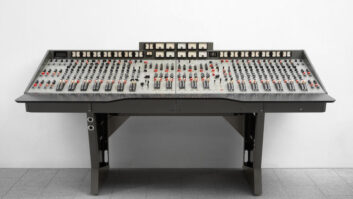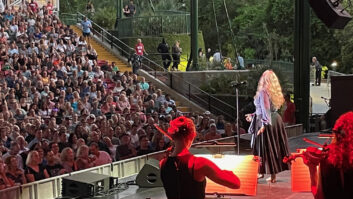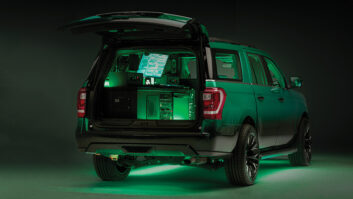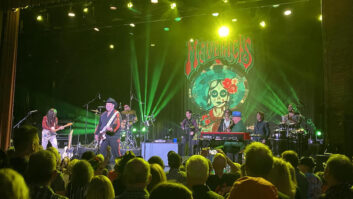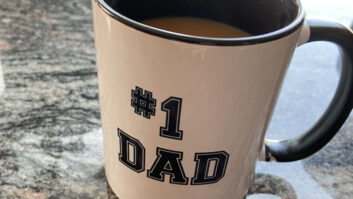by Christopher Walsh.
Choglamsar, Ladakh, Jammu & Kashmir State, India–A stream runs behind the house I’m staying at in this town outside of Leh, one of the major crossroads of Asia until the 1962 Sino-Indian war. It makes a most soothing sound, like that of those “natural sound” machines, although this one really is natural and wonderful to fall asleep and awaken to.
I’ve been in-country for several days but sleep patterns are still thrown off; some days I nap in the afternoon, some nights are sleepless. But I always awaken before dawn, often to the symphony of birds that begin singing shortly before sunrise. This morning, I crept to a window and turned on the Zoom H4n Handy Recorder–“handy” is right. I’m not sure what I will ultimately do with the recordings I’ve been making here–birdsongs, that stream, a Nepali lama who visited the house yesterday morning and chanted for at least a half-hour, the midday call to prayer at a local mosque–but I’m having fun making field recordings in this exotic and magical place.
Later, I spend an exhilarating thirty minutes in the home of a Beda family, the lowest of the low-caste groups in Ladakh, who commonly make their living by providing musical entertainment at weddings and other functions. Pressed against a wall in the small room, I record two men playing a horn and large, tabla-like drums partly filled with water (I think) with the Zoom H4n and a Sony DV camera. Through a translator, I am told that the selections describe courtship and marriage. Later, I ask them to play separately, in hopes of utilizing one or both instruments in later recordings in New York. The drums are big, resonant and powerful, and are played with very thick sticks, a kind of mini-John Bonham setup (I am in Kashmir State, after all, albeit its eastern part).
For their last number, the women clap in time as a boy, perhaps nine years old, dances to the loud, hypnotic music. His face and arms are badly disfigured, presumably from a fire, and at the song’s conclusion, he runs back outside the house and huddles against a wall, baseball cap pulled low over his face.
Yesterday, I played two acoustic guitars in a shop on the Changspa Road in Leh–by “played,” I mean “attempted to tune.” The asking price of the first one, a three-quarter size, no-name model, was 3,000 rupees (about $62). I wasn’t going to pay more than Rs 500, and would have surely left it behind when I departed the country.
“I have professional models,” the shop owner said, seeing my dissatisfaction, and dispatched his employee to the stockroom. The employee returned with a marginally better instrument (Rs 7,500/$155), a brand that shall remain nameless but claims, right on the guitar’s body, to be “export quality.” “To where?” I wondered. It, too, was impossible to tune, poorly constructed and sounded just as one would expect such an instrument to.
Later, at an outdoor restaurant just down the road from the shop, I strummed a “Givson” archtop, like the previous model made in Kolkata, and it, too, made me appreciate American craftsmanship, at least with regard to guitars. Like the others, “Guaranteed impossible to tune properly” could have been stamped on its body, though it certainly looked cool with its natural finish, single-cutaway body and snazzy f-holes.
Later still, my better half arranges for a “Höbner” acoustic guitar to be borrowed. It is in dire need of a truss rod adjustment and sounds very thin, but it’ll do, and with a makeshift plectrum fashioned from a found piece of fiberboard, I spend several hours lazily strumming in the back yard, on the roof and with my better half’s cousin, a 19-year-old student and aspiring musician who is enamored with the music of Bob Marley and Green Day. (Kurt Cobain and Che Guevara are also popularly depicted on t-shirts worn by local youths here.)
Like the numerous “Givson” and “Fander” guitars I’ve seen in this country, piracy of pre-recorded music is well beyond rampant. A young Tibetan man presented me with a compilation of Beatles music, delivered as MP3 files–I think–on a CD-R. Whoever is duplicating these, complete with stuck-on CD label, makes an assertion of authorization as ironic and laughable as the run-on sentences in said assertion: WARNING: UNAUTHORISED COPYING HIRING LENDING, PUBLIC PERFORMANCES AND BROADCASTING OF THIS RECORDING IS PROHIBITED. STATUTORY DECLARATION: THIS IS CONFIRM WE HAVE OBTAINED THE NECESSARY LICENSE FOR COPYRIGHT THE OWNERS OF SUCH THIS CD. CAUTION: IF IT IS VIDEO CD DO NOT ATTEMPT ON CD PLAYERS IT MAY DAMAGE THE SPEAKERS OF THE AUDIO SYSTEM.
I’m reminded of the many interviews I did with the majors’ replicating executives and officials from the International Recording Media Association (IRMA)–now the Content Delivery & Storage Association (CDSA)–while with Billboard and this magazine, who had, it seemed, effectively resigned themselves to unstoppable piracy in Asia and other parts of the world.
Case in point: Toward the end of my trip, my better half purchases two discs from a shop in Leh. For me, she has selected 100 Greatest Instrumental English Songs, a curious compilation comprised primarily of extremely “easy listening” recordings punctuated by gems such as Booker T and the MGs’ “Time is Tight” and “Hang ‘Em High,” “Shaft” by Isaac Hayes, Roy Buchanan’s “The Messiah Will Come Again,” “Samba Pa Ti” by Santana, and the lovely “Recuerdos De La Alhambra” by Narciso Yepes. Alas, they sound somewhat worse than the average MP3–and the two George Winston tracks are distorted to the point that I’m not even certain they are the same Windham Hill recordings–but I have to admit, it’s fun driving around the Himalayas with Booker T, Roy and Carlos.
The disc’s packaging–a flimsy cardboard sleeve the dimensions of an Amaray box–bears the same statement of authenticity as the Beatles compilation.
For herself, she has chosen a disc promising a staggering 320 MP3s of songs from India’s thriving Bollywood film industry. Unlike my 100 Greatest [Mostly] Instrumental English Songs, hers doesn’t even have a label on the CD-R, nor any statement of authenticity on the packaging. The creator of this disc makes no effort at all to imply legitimacy. And no one seems to care.
Each disc cost 50 rupees, about $1.03, or 420 songs for a retail price of 206 cents, just under one half-cent per song. I wonder who is being compensated for these sales. There must be factories spitting out these CD-Rs nonstop, and based on my observations, shutting down such operations is not on the government’s radar, at least not yet.
Indeed, this country resembles New York’s Chinatown, writ gigantic: bad copies of everything from New York Yankees caps to Nike and Reebok gear to MP3s and video and audio CDs of popular movies and music are simply everywhere. Law enforcement, to the extent that it exists here (though the Indian military presence, with the Line of Control close and tension with neighboring Pakistan always simmering, is enormous), apparently does not recognize intellectual property. At all.
If you’re like me, you can obsess over a single song or album for days or weeks at a time. Before leaving New York, the latest was Van Morrison Live at Montreux 1980 (DVD-Video). Van has been on the brain a lot these last six or seven months, ever since I learned he’d performed Astral Weeks at the Hollywood Bowl and would not only release a CD and DVD of said performances, but perform the 1968 masterpiece again in New York and elsewhere.
My thoughts turned to Montreux, perhaps one of the most beautiful places on this earth, and the famous festival I was so fortunate to attend in 2008. Meyer Sound, as it has for over two decades, provided exceptional sound reinforcement and hospitality, and the Jazz Festival’s founder, the brilliant Claude Nobs, provided the top-notch talent. What a wonderful gift these good people give, year after year!
At Montreux, Van and his stellar band performed several songs from the previous year’s Into the Music. There’s a passage, beginning at 2:28 of “Troubadours” on Into the Music (performed on the Montreux DVD) in which Mark Isham (piccolo trumpet) and Pee Wee Ellis (saxophone) each play a brief solo. Each, while distinct from the other, conveys such emotion, each plaintively reaching, as if expressing some yearning… This is why I don’t try to put such things into words, but this passage of “Troubadours” replays over and over in my head, here in India, much like I endlessly replayed the performance of same from the Montreux DVD in New York. Ditto for “Ballerina,” in which guitarist John Platania plays the most delicate flurries, drawing a huge, appreciative response from the lucky Montreux attendees. Highly recommended.
“I first played with him on Into the Music, Isham told me, shortly before my trip to India. “He liked playing with me because I played piccolo trumpet and flugelhorn–I brought a bunch of stuff to the table. He’d gotten inspired to have horns again and asked if I knew a saxophone player, and I brought in Pee Wee Ellis. We stayed together as a horn section for six, seven years, and Pee Wee stayed another six years after that. I ended up playing keyboards and synthesizers, and did a whole lot of stuff with him.
“Van is one of the true geniuses of our time,” Isham continued. “I just saw him the other night at the Orpheum [Theatre, Los Angeles], and was just floored. He’s still doing it, doing it better than ever. He’s one in a million.”
“It really is amazing how vital he is,” Platania told me, earlier this year. “He’s untouchable as far as a singer, writer, anything.”
Back in New York, I attempt to learn each “Troubadours” solo on piano and guitar, like (I wish) Dr. Hunter S. Thompson typing out The Great Gatsby to understand and internalize its rhythms and essence. Results are mixed, but I’ll keep trying. At least I’ve got better quality instruments than the ones sampled in India.
Standing to leave that music shop on Changspa Road, I noticed an instrument in the store’s window, out of place alongside the cheap guitars, harmoniums and toy sitars. “Is that a piccolo trumpet?” I asked. It was.

